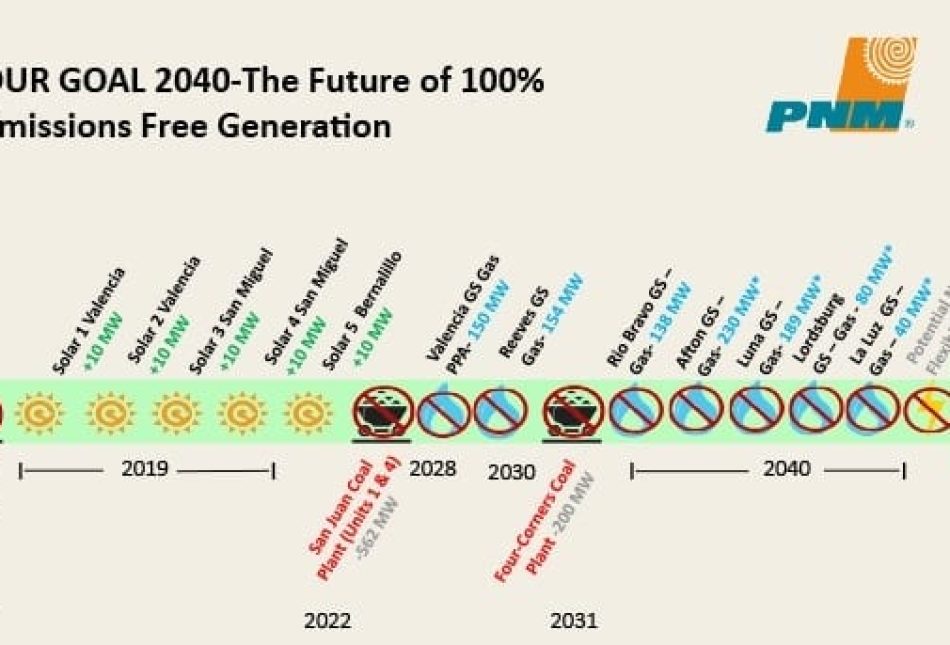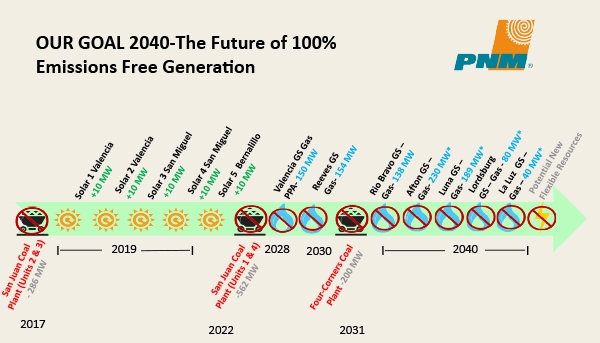PNM’s zero carbon math problem

Not only did the Public Service Company of New Mexico (PNM) successfully lobby in the 2019 Legislature for a 50% renewable mandate by 2030, it has now put itself on record as saying it’s going to be “zero emissions” by 2040. And one actually neat feature is that at any given time you can find out how much electricity PNM is getting from so-called “renewables.” In looking at it over a few days that amount ranges up to the mid-30% range by day and drops to single digits at night.
Of course, we at the Rio Grande Foundation are highly skeptical of that transition and the costs it will foist on New Mexico rate-payers and we made that argument in committees and in the media during the legislative session. PNM’s website has some interesting graphics regarding the transition. You can find them below. The first shows how they are going to change their electricity portfolio in the decades to come:

Next, we see a chart showing more details. But what we don’t see is the math. That is where we have the problem.

So, we start out -286 MW for the shutdown of units 2 & 3 at San Juan Generating Station.
Add in 50 MW of solar coming online this year and we’re at -236 MW. We subtract another 562 with the total shutdown of San Juan (and we’re at -798 MW by 2022. Another 200 MW comes offline with the shutdown of Four Corners Power Plant in 2031 and we’re -998 MW total.
Finally, PNM wants to eliminate an ADDITIONAL 1081 MW of natural gas generation between 2028 and 2040. So, that means PNM will reduce electricity generation by 2,000 MW of traditional electricity generation between 2017 and 2040.
According to the chart below PNM’s capacity at the end of 2017 was 2,801 so PNM is swapping out more than 70% of its electricity generation and only has specific plans for 50 MW of that total. Of course PNM’s 2040 “zero carbon” goal is NOT synonymous with 100% “renewable,” but even if PNM rapidly ramps up on nuclear power from Palo Verde, where does all that “renewable” electricity come from? We don’t know. More importantly, while PNM claims that “renewables” will be cheaper, real-world experience indicates otherwise.
